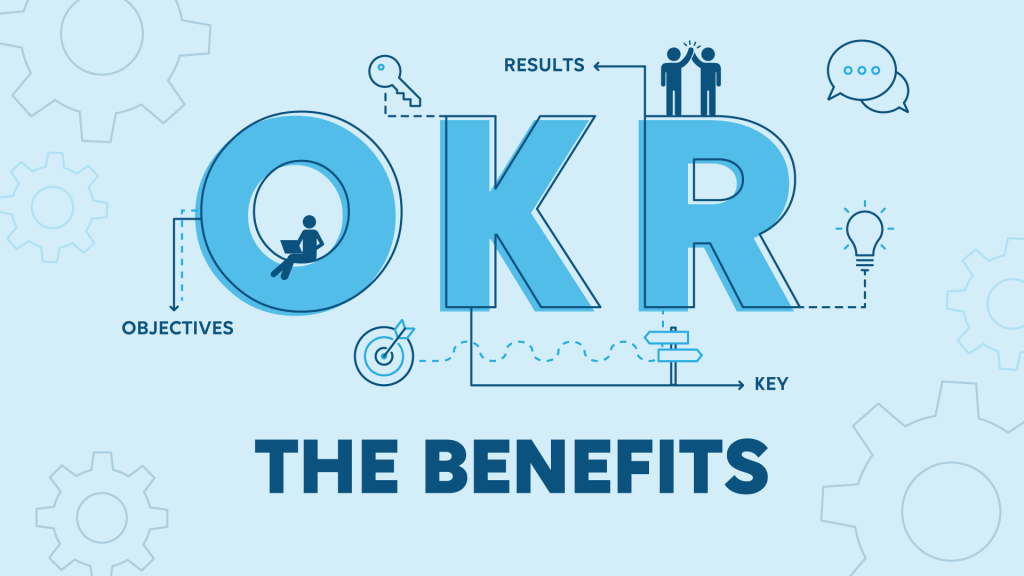Have you ever found yourself in a situation where you were working very hard on a topic that you thought was crucial, while the other teams made efforts in exactly the opposite direction? Or a situation where your team’s efforts were disengaged from current business goals? Or maybe even a situation where the resources allocated to achieving a goal were completely disproportionate to its importance?
Certainly, you have!
Because these are growing pains that any company has to face if it wants to succeed. And it is at this point that you should start reflecting on how you can (re)align the goals of all employees with the overarching vision of the organization, nurturing a more goal-driven culture; and OKRs are an excellent tool for just that.
In this post, we will deep dive into the basics of OKRs: what they are and how you can implement them.
What are OKRs?
“OKRs”, or Objectives and Key Results, is a collaborative goal-setting framework.
They homogenize the entire goal-setting process across the organization, challenging the teams to set their own goals and measure their impact on the company. This allows for a clear, aligned, and aspirational focus that drives business value.
In other words, OKRs help teams within a company to set, communicate, and measure goals in order to maximize alignment and engagement. And to do that, the OKR framework provides a very simple, yet powerful way to formulate goals:
We will make progress in pursuit of [Objective] by achieving [Key Results].
The Objective
An Objective is a memorable, qualitative description of something you would like to achieve in the future. They are supposed to be short, engaging, and inspirational. It is also important that Objectives set direction, expressing the company’s vision so that everyone understands where to go.

The Key Result
A Key Result is a measurable outcome required to achieve the Objective. Key Results define how you will reach your goals and track progress, so they must be measurable. They are supposed to be specific and time-bound, aggressive yet realistic. With Key Results you define clear, quantitative criteria for reaching success.

How do I create OKRs?
To create a high-quality OKR, we must start by reflecting on what we want to achieve and when we should achieve it!
Is it the engagement of our customers that we want to foster? Is it the quality of our product that we need to improve? With questions like these in mind, we start to craft the Objective.
Setting the Objective(s)
This can be done with the following formula:
verb + outcome + deadline
Choose a verb that encourages dynamic growth and achievement
You should choose your verb carefully because not just any old verb will do! Go for a verb that implies “change”; after all, that’s what we want to achieve!
Possible verbs include: “transform”, “become”, “create”, “smash”, “increase”, “decrease”, “improve”, “evolve”, and “disrupt”. What do they have in common? They all encourage dynamic growth and achievement, while verbs like “continue”, “maintain”, and “meet” imply continuity or passivity.
Pick a clearly identified outcome
After the verb, you should insert a clearly identified outcome; be specific about what you want to achieve and, ideally, link that to the business value associated with this idea.
Finish strong with a finite & feasible deadline
Finally, you should finish the statement with a finite and feasible deadline, which will help you to hold yourself accountable for this Objective.
Examples of good objectives:

Wherever possible, teams should incorporate the business value into the Objective they intend to achieve.

Since this framework challenges teams to focus on what is important to achieve in short term, it is also important to not have more than 3-5 Objectives.
To measure is to know: creating Key Results
After the Objective, we should write the Key Results to measure our progress towards the Objective. There are two main types of Key Results:
- Project-based Key Results: Critical milestones that must be achieved to ensure your efforts are on track. These types of Key Results can be simply marked when completed.
- Outcome-based Key Results: Quantitative measures that could include a wide range of tangible measures of success. These types of results measure progress in terms of “from X to Y”.
Similar to the Objectives, we can use the formula “verb + outcome + deadline” to create a Key Result.
Since their purpose is to achieve a clear outcome, verbs such as “improve”, “increase”, “reduce”, “contribute”, “perform”, and “implement” are a perfect match to indicate how you will hit the target.
Below, you can see a clear example of an Objective in combination with the two types of Key Results:

Discover the complete blog series on OKRs

BLOG | OKRs
PART 2 – The benefits of OKRs: F.A.C.T.S.
Let’s deep dive into the basics of OKRs: what they are and how you can implement them

BLOG | OKRs
PART 3 – OKR cycle – plan, evaluate, adapt, repeat
Learn how to correctly implement the 4 phases of the OKR cycle